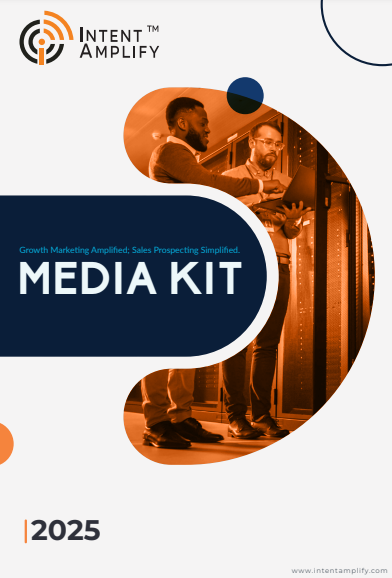
What is Generative Search Optimisation? The Future of B2B SEO in 2026
- Last updated on: October 2, 2025
Digital marketing is a constantly changing field. In this new marketing world, search engines have gone way beyond what they were in the past, when they were just keyword matchmakers. The way the buyers use AI to find data has changed a lot, and normal SEO strategies are not enough anymore. Thus, Generative Search Optimisation (GSO) has come; it is an advanced method of using AI to provide more personalised and more meaningful search experiences.
B2B companies will get so much from this, especially the technology, SaaS, fintech, and cybersecurity industries, as the GSO can be the game-changer in the whole way of reaching the decision-makers through content. GSO is nothing like traditional SEO, which is all about the keywords and backlinks.
It uses generative AI to predict user intent, to produce dynamic content, and to change search results in real-time. The mentioned change enables the market to engage more effectively, grasp the growth of the pipeline, and link their strategies of content to the existing revenues of the company.
Understanding Generative Search Optimisation
Generative Search Optimisation (GSO) is the next level of traditional SEO with the help of AI and ML. Simply put, GSO leverages AI to comprehend user intent, produce relevant content for the context, and dynamically curate search experiences.
In the world of B2B, the contrast is as big as it can get. Enterprise buyers are deeply involved in making decisions that are not straightforward, and quite often, they do the research over various channels before getting in touch with sales personnel. Having the aforesaid, some marketers can very much feel the need to foresee these requirements and thereby convey the exact content that at that moment will be the connecting point of the conversation.
As an example, AI is able to create multiple versions of one and the same content, catering to specific industries, company sizes, or buyer personas, so that engagement and lead conversion rates are both improved.
How Generative Search Optimisation is Transforming B2B SEO
Generative Search Optimisation (GSO) revolutionises B2B SEO by changing the focus from keywords to buyer intent. In contrast to traditional SEO that emphasises rankings and search volume, GSO provides content suitable for each stage of the enterprise buying journey.
One of the main changes is that of personalised search experiences. AI-powered instruments take into account a potential customer’s industry, company size, role, and previous interactions in order to produce content that caters to the specific needs. As an illustration, a fintech buyer who is investigating the compliance solution may get the dynamic content that deals with the relevant regulatory challenges. This personalisation increases engagement and makes your brand visible as a trusted adviser.
GSO is also the tool for the creation of dynamic content on a large scale, which allows numerous variations of landing pages, blogs, and whitepapers for different personas to be created. For ABM efforts, it selects the most valuable accounts, thus providing the content that gives access to further development of the pipeline. Omnichannel campaigns can benefit from the existence of the same AI-optimised message across the web, e-mail, social, and paid channels. Tools like ChatGPT Enterprise, Jasper AI, and MarketMuse enable scalable, intent-driven content aligned with enterprise buyer journeys.
Key Components of Generative Search Optimisation
B2B marketers who want to successfully apply Generative Search Optimisation (GSO) need to comprehend GSO’s underlying components. GSO combines Artificial Intelligence (AI) technologies of a high degree of sophistication, data analytics, and strategic integrations to offer individualised, intent-driven search experiences.
1. AI-Driven Content Creation and Optimisation
Generative AI is capable of producing content that is not only of high quality but also buyer-intent, industry, and persona-specific. In addition to landing pages, blogs, and whitepapers, AI tools also fetch trending terms and create content that satisfies not only SEO needs but also business objectives. By 2025, 42.3% of SEO professionals now use AI writing assistants, reflecting a significant shift toward AI-driven content creation. The production cycle will be shortened and made more efficient.
2. Predictive Intent Analysis and Search Behaviour Modelling
GSO employs an AI to forecast the needs of prospects in terms of the content they will require, the time when they will require it, and the reasons for their needs. Gathering of interaction data using metrics like search trends, user activities, and historical data helps marketers make a call on new queries likely to emerge and prepare content in advance of their demand. This opens the door to targeted engagement with the most valuable prospects.
3. Semantic Search and Contextual Relevance
The use of semantic search implies that AI is not simply searching for an exact match of keywords, but it’s also capable of associating the words of the query with the real-world objects they refer to. In addition to just using keywords, GSO employs context to deliver more accurate results. Thus, this method leads to a better user experience and higher user engagement. Complex B2B products and services find most help from this lens.
4. Integration with CRM, Marketing Automation, and ABM Tools
GSO functions optimally when tied with the current marketing and sales technology stacks. AI can use integration to access account information, monitor interest, and customise content for different channels. The net outcome is that the decision-makers encounter smooth experiences that facilitate omnichannel campaigns.
5. Data Privacy and Compliance Considerations
Enterprise marketers must ensure that AI-powered search is in line with global privacy rules. GSO solutions include features of data protection, such as the encryption of data, the removal of identification tags, and adherence to laws, which keep safe not only the organisation but also its potential customers.
B2B marketers can leverage Generative Search Optimisation to bring the kind of content that is not only well-timed and relevant but can also be acted upon, thus shortening the path from search behaviour to revenue outcomes by integrating the mentioned components.
Practical Strategies for B2B Marketers
Generative Search Optimisation (GSO) implementation is a process that involves aligning the AI capabilities with the organisation’s goals. B2B marketers can employ GSO to make content more relevant to the audience, to accelerate the flow of the pipeline, and to raise the overall performance of SEO.
1. Adapt Content Strategy for AI-Driven Search
Creating content marketers should produce content that answers questions that make sense in the context of the content they have on the site, instead of just focusing on keywords.
AI tools can be used for spotting trending topics, content outlining, and creating multiple versions of content that target the needs of the buyer persona. This way, the content will appeal to the target accounts.
2. Optimise Website Architecture and Schema
The clean architecture of a website, schema markup, and structured data are all important parts of the content. However, search engines still cannot always get it right.
With GSO, these shortcomings are addressed to meet the customer’s search needs accurately, thus getting more visibility and a better user experience on any device.
3. Leverage AI for Account-Based Personalisation
Combine GSO with ABM solutions to make your target accounts more comfortable by providing them with personalised content.
Adjustable landing pages, tailored offerings, and the use of the industry vocabulary make up the good interaction and shorten the time of the sales cycle.
4. Test, Measure, and Iterate SEO Campaigns
The process of “continuous optimisation” is vital to always reaching the desired goal. The AI part of the job is seen through the analytics it provides, which include monitoring the search performance by setting the right questions, tracing engagement metrics, and discovering the weakest performing content.
The period of iterative testing is what hampers ensuring that the campaigns remain aligned with buyer intent and market trends in this regard.
5. Align GSO with Sales and Revenue Goals
Generative search should be connected with sales and revenue goals so that it can truly advance sales activities and contribute to business value. The benefits of integrating insights from GSO into sales strategies, demand generation campaigns, and omnichannel marketing efforts are great.
Through linking search performance to revenue outcomes, the marketing teams become capable of displaying a measurable ROI to the executives.
6. Collaborate Across Teams
The support of collaborative working between marketing, sales, and IT teams is essential for a successful GSO implementation.
Shared data, consistent messaging, and unified workflows are the means available for AI-driven search to support customer goals of being a larger part of organisational goals.
Measuring the ROI of GSO in B2B
GSO B2B marketers should first connect GSO with measurable KPIs to justify investment. Unlike traditional SEO, GSO success is not only, but it is about pipeline and business outcomes.
Key Metrics to Monitor:
- Organic Traffic Quality – Concentrate on visits from high-value accounts rather than numbers.
- Engagement Metrics – To measure relevance, track time on page, scroll depth, and content interactions.
- Pipeline Influence – Follow the contributions of AI-driven search content to MQLs, SQLs, and closed deals.
- Conversion Rates – Indicate the number of form completions, demo requests, or downloads resulting from AI-optimised pages.
- Account Engagement – In ABM campaigns, observe how target accounts interact with personalised content across different channels.
Measurement Tools:
Integration with CRM, marketing automation platforms, and analytics tools is extremely instrumental. The AI-powered dashboards will give you real-time insights, forecast trends, and bring out the content with high performance.
Example: One SaaS company implemented GSO so that the search content could be personalised for the target industries. Within six months, the company saw the engagement of top-tier accounts increasing by 42% whereas the influenced pipeline revenue was up by 28%.
By connecting Generative Search Optimisation to measurable KPIs, marketers can demonstrate tangible ROI, justify budget allocation and refine strategies based on data-driven insights.
The Future Outlook of Generative Search Optimisation
The development of generative search optimisation (GSO) will still be on an upward trend until 2026, and the impact of these changes will be significant as GSO will rearrange the whole B2B digital strategy landscape. In California and the UK, 96% of companies report having AI-searchable content, compared to 93% in France and 83% in Germany. We will witness the next big thing in enterprise SEO just to be sealed by AI improvements, widespread use of generative models, and the surge of intent-driven search experiences.
1. Integration of Multimodal Search
One of the most significant changes in future GSO will be the merging of various search types, such as text, voice, and visual, to provide a smooth user discovery experience. With customers being more familiar with AI, they will expect to be given the most up-to-date information that is relevant to them at each point of contact.
2. Hyper-Personalisation at Scale
One of the ways AI is going to help is by setting up real-time, personally tailored websites, content hubs, and omnichannel campaigns. Indeed, with the help of persona-based marketing, the marketer will be able to send the right message to the right person, thus deepening engagement and increasing conversion.
3. Predictive and Proactive Content Strategy
GSO will be more and more ahead of the curve as it will identify just the right time for the buyer before it even gets there. The application of predictive analytics and generative AI will not only help enterprises to identify potential content topics but also to optimise wording and, consequently, remain competitive even in challenging markets.
4. Greater Alignment with Revenue and ABM Goals
The addition of search technologies relying on AI will also be seen as a valuable resource for sales in injecting pipeline and driving revenue outcomes. GSO will be a driver of ABM and demand strategies by giving the marketer access to the activities of the target account through continuous engagement and monitoring efforts.
Precipitate adopters of GSO will be the ones who stand to gain the most from this scenario. Becoming one of the market leaders in 2026 will be defined by the AI-powered search investment you made, how well you managed to automate your marketing campaigns and the extent to which your strategy was keyed into revenue objectives.
Conclusion
Generative Search Optimisation (GSO) is transforming B2B SEO by combining AI, intent-driven strategies, and personalisation. Unlike traditional SEO, it focuses on understanding buyer behaviour, delivering relevant content, and driving measurable business outcomes. For enterprises in technology, SaaS, fintech, and cybersecurity, adopting GSO is now a strategic imperative for 2026.
Using AI-driven content, predictive intent analysis, and semantic search, marketers can engage high-value accounts and accelerate revenue growth. Integration with ABM platforms, CRM, and marketing automation ensures consistent messaging across channels, enhancing omnichannel campaigns.
FAQs
1. What is the difference between Generative Search Optimisation and traditional SEO?
Traditional SEO focuses on keywords and backlinks. GSO uses AI to understand intent, personalise content, and predict search behaviour.
2. How can AI improve B2B lead generation through search?
AI analyses intent, generates personalised content, and delivers relevant results, increasing engagement and accelerating high-value lead conversions.
3. Which industries benefit most from GSO?
Technology, SaaS, fintech, cybersecurity, and other complex B2B sectors gain the most due to multi-stage buyer journeys and account-based strategies.
4. How do I measure the success of Generative Search Optimisation?
Track engagement metrics, pipeline influence, conversion rates, and account-level interactions across channels to quantify impact.
5. Is GSO compatible with existing marketing automation tools?
Yes. GSO integrates with CRM, ABM platforms, and marketing automation tools to deliver seamless, personalised search experiences at scale.




